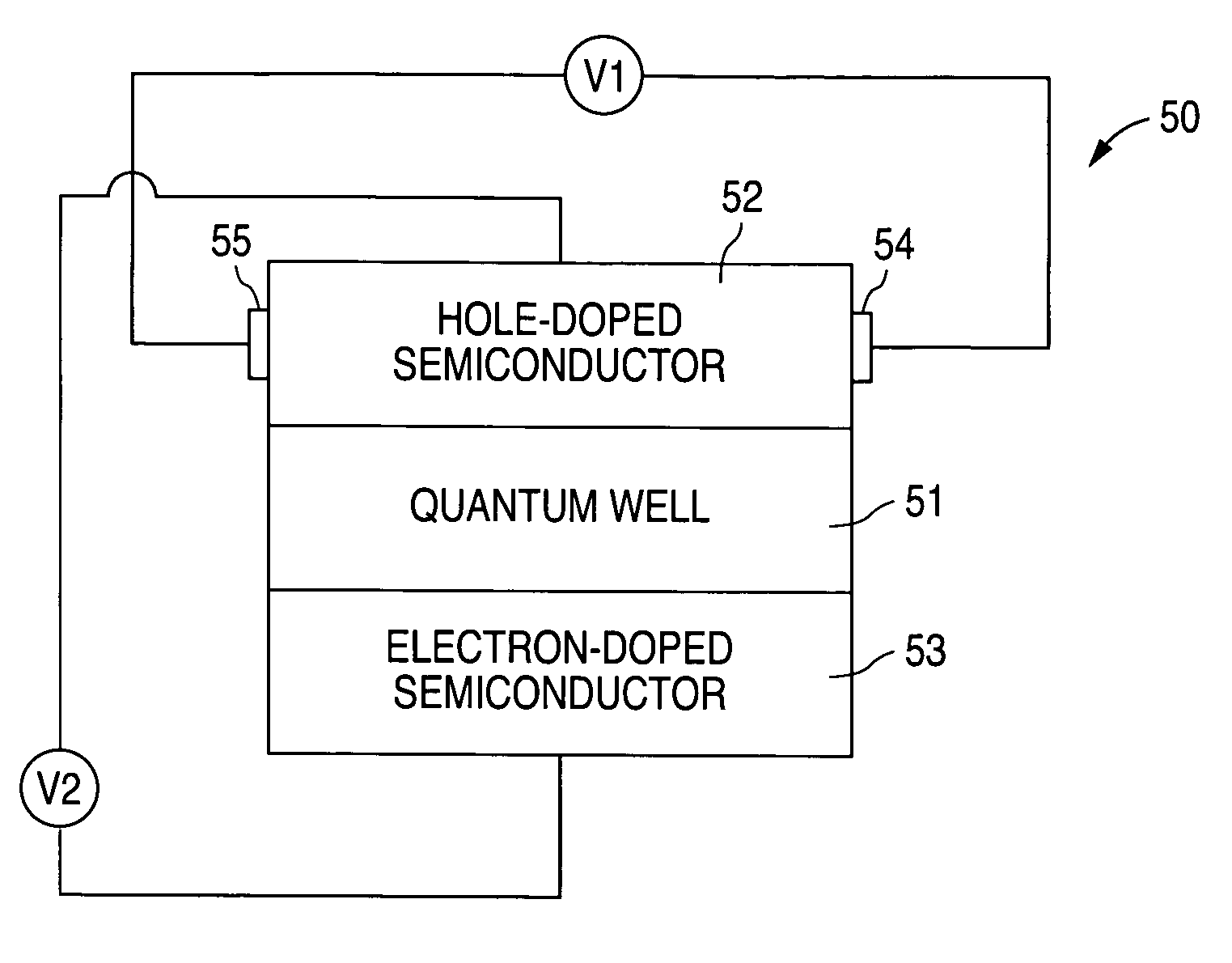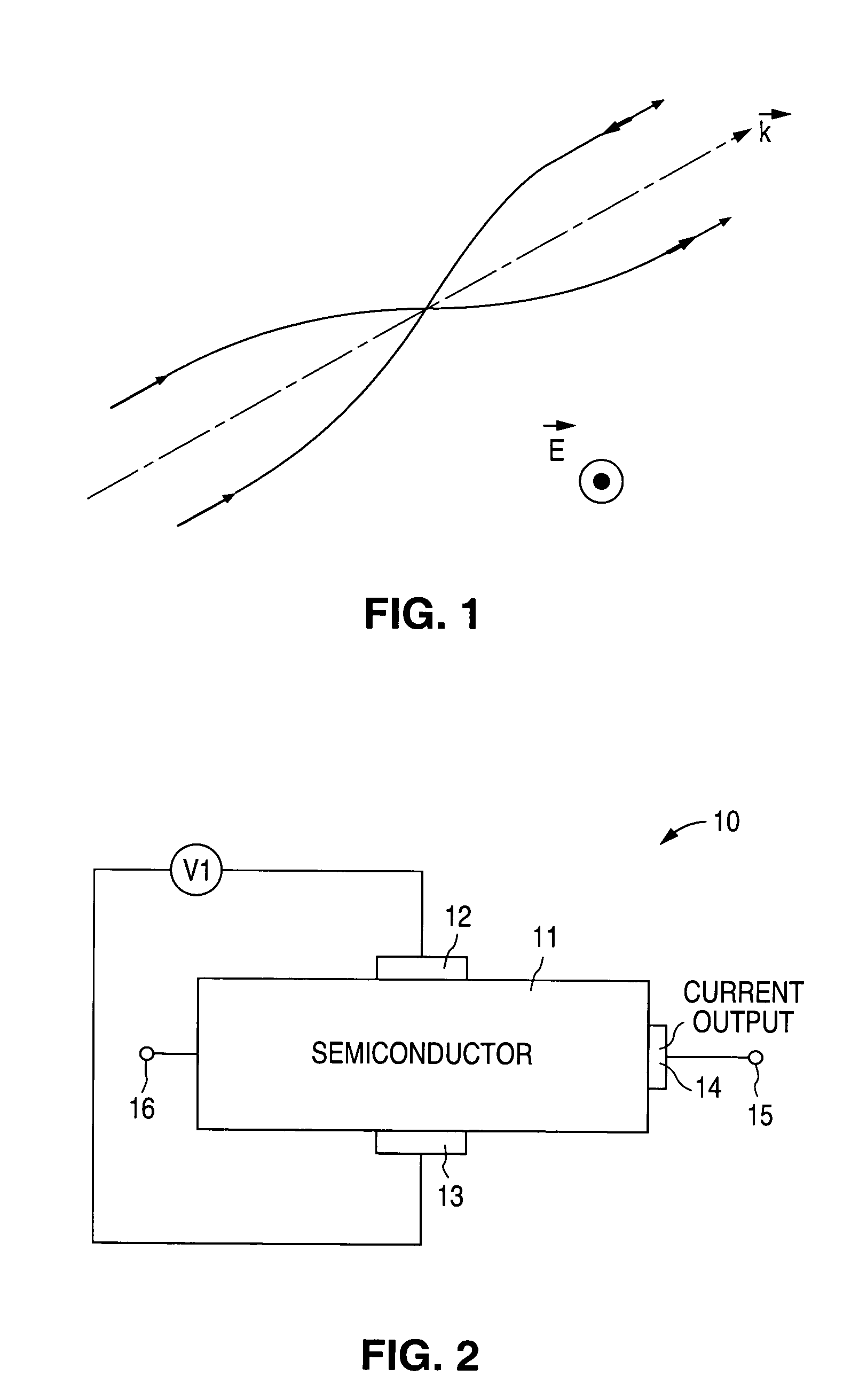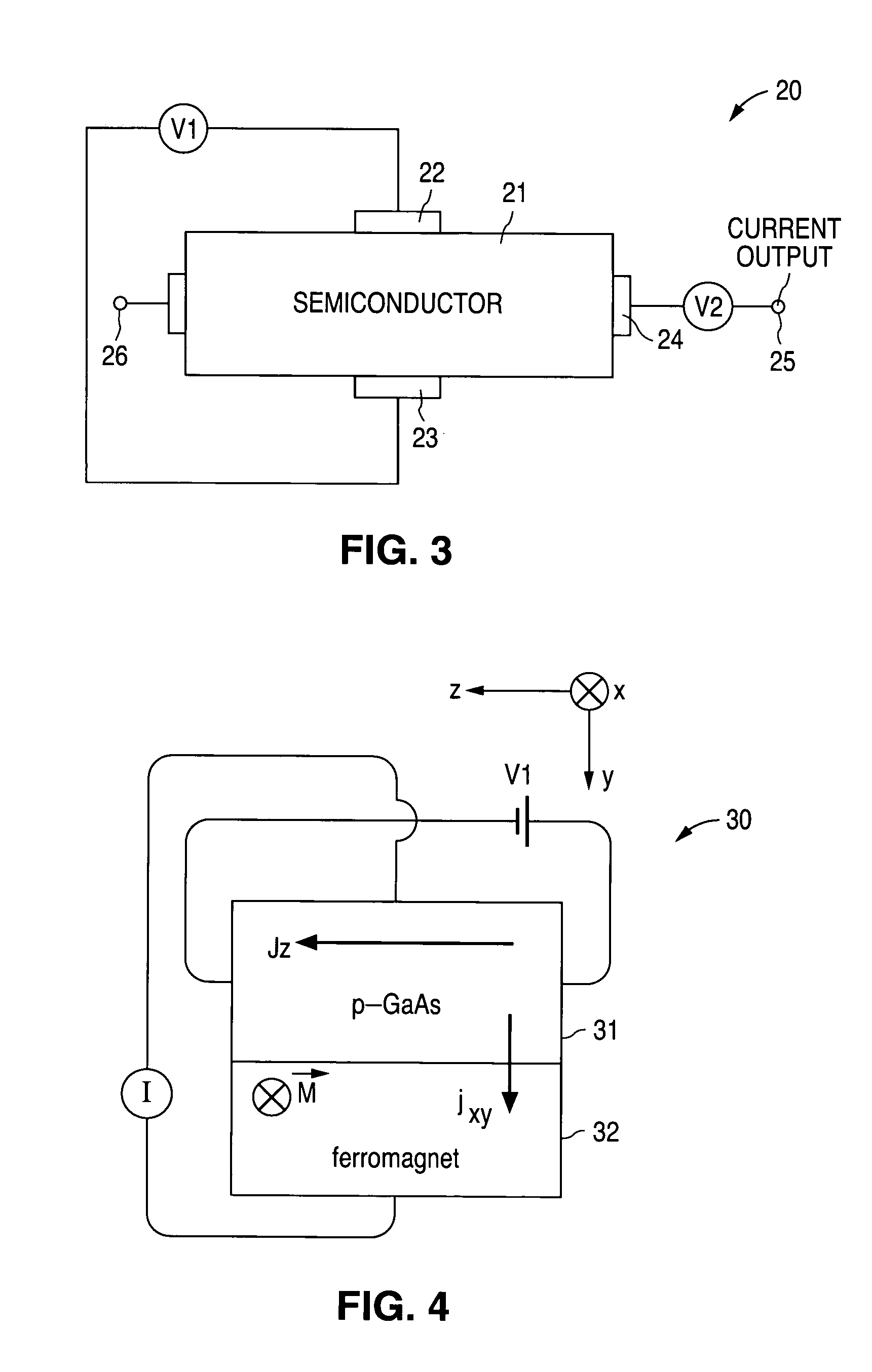Electric field induced spin-polarized current
a technology of electric current and electric field, which is applied in the direction of basic electric elements, electrical apparatus, semiconductor devices, etc., can solve the problems of inability to achieve effective spin injection using only nonmagnetic semiconductors, no efficient method of spin generation and injection and inability to achieve the effect of generating and injecting spin in semiconductors at room temperatur
- Summary
- Abstract
- Description
- Claims
- Application Information
AI Technical Summary
Benefits of technology
Problems solved by technology
Method used
Image
Examples
Embodiment Construction
[0022]In accordance with the principles of the present invention, a device and a method for generating a highly spin-polarized electric current utilizes a semiconductor structure and an applied electric field across the semiconductor structure. The semiconductor structure includes a hole-doped semiconductor structure of finite bandgap, a hole-doped semiconductor structure of zero bandgap, or an undoped semiconductor of zero bandgap. In one embodiment, an electric field is applied across a hole-doped semiconductor material having a strong spin orbit coupling energy to generate the spin polarized electric current. The spin current, referred herein as an “electric-field-induced spin current,” can be generated at room temperature and is free from rapid relaxation of spins. Because the spin-polarized electric current is generated in a semiconductor material without the use of metallic ferromagnet or ferromagnetic semiconductor, efficient spin injection in a semiconductor can be realized ...
PUM
 Login to View More
Login to View More Abstract
Description
Claims
Application Information
 Login to View More
Login to View More - R&D
- Intellectual Property
- Life Sciences
- Materials
- Tech Scout
- Unparalleled Data Quality
- Higher Quality Content
- 60% Fewer Hallucinations
Browse by: Latest US Patents, China's latest patents, Technical Efficacy Thesaurus, Application Domain, Technology Topic, Popular Technical Reports.
© 2025 PatSnap. All rights reserved.Legal|Privacy policy|Modern Slavery Act Transparency Statement|Sitemap|About US| Contact US: help@patsnap.com



